Country Dream |
|||||||||||||
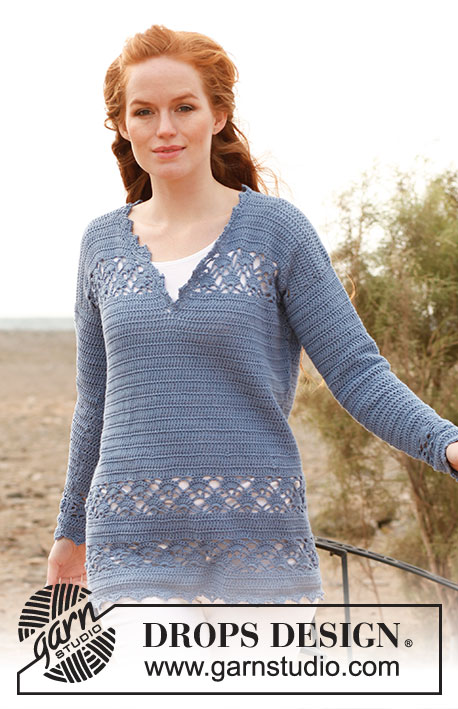 |
 |
||||||||||||
Crochet DROPS tunic in ”Safran”. Size: S - XXXL.
DROPS 136-25 |
|||||||||||||
|
TR ROWS: Beg every tr row with 3 ch (not counted as 1st tr), work 1 tr in 1st st, then 1 tr in every st, turn. PATTERN: See diagram M.1. 1 repetition of diagram M.1 = 10 tr in width and 7 rows vertically. DECREASE TIP: Work 1 tr but wait with last pull through (= 2 sts on hook), then work next tr but on last pull through, pull thread through all sts on hook = 1 st dec. INCREASE TIP: Inc 1 st in each side of piece by working 2 tr in 1st and last st on row. --------------------------------------------------------- BACK PIECE: Worked back and forth. Loosely work 102-102-122-122-142-142 ch on hook size 3.5 mm with Safran. Work 1st row (= RS) as follows: Work 1 tr in 4th ch from hook, then 1 tr in every ch, turn = 99-99-119-119-139-139 tr (= 9-9-11-11-13-13 repetitions of diagram M.1 + 9 sts). REMEMBER THE CROCHET TENSION! Then work 3-3-4-4-5-5 TR ROWS - Read explanation above = 4-4-5-5-6-6 tr rows vertically. Continue to work diagram M.1 as follows: ROW 1: 1 ch, 1 dc in 1st tr, * 3 ch, skip the next 3 tr, in next tr work as follows: 1 tr, 3 ch, 1 tr, then 3 ch, skip the next 3 tr, 1 dc in each of the next 3 tr (= 3 dc) *, repeat from *-* the rest of row. When repeating from *-* the last time work 3 ch, skip the next 3 tr and work 1 dc in last tr, turn. ROW 2: 1 ch, 1 dc in 1st dc, * 3 ch, skip next ch-loop, 7 tr in next ch-loop (between 2 tr), 3 ch, 1 dc in the middle dc from 1ST ROW *, repeat from *-* the rest of row. When repeating from *-* the last time work 3 ch and 1 dc in last dc, turn. ROW 3: 1 ch, 1 dc in 1st dc, 4 ch, * 1 dc in each of the next 7 tr (= 7 dc), 5 ch *, repeat from *-* the rest of row, finish with 4 ch and 1 dc in last dc, turn. ROW 4: 3 ch, 1 tr in 1st ch-loop, * 3 ch, 1 dc in the middle of the 3 dc from 3RD ROW (= 3 dc), 3 ch, [1 tr, 3 ch, 1 tr] in next ch-loop *, repeat from *-* the rest of row. When repeating from *-* the last time work 3 ch and 1 tr in last ch-loop, turn. ROW 5: 3 ch, 3 tr in 1st ch-loop, * 3 ch, 1 dc in the middle dc from 4TH ROW, 3 ch, skip next ch-loop, 7 tr in next ch-loop (between 2 tr) *, repeat from *-* the rest of row. When repeating from *-* the last time work 3 ch, 2 tr in last ch-loop and 1 tr in 3rd ch from 4TH ROW, turn. ROW 6: 1 ch, 1 dc in each of the next 3 tr (= 3 dc), * 5 ch, 1 dc in each of the next 7 tr (= 7 dc) *, repeat from *-* the rest of row. When repeating from *-* the last time work 1 dc in each of the last 3 tr (= 3 dc), turn. ROW 7: 1 ch, 1 dc in 1st dc, * 4 ch, 1 dc in next ch-loop, 4 ch, 1 dc in each of the middle 3 dc from 6TH ROW (= 3 dc) *, repeat from *-* the rest of row. When repeating from *-* the last time work 4 ch and 1 dc in last dc, turn. Then work 1 dc row as follows: 1 ch, 1 dc in 1st dc, * 4 dc in next ch-loop, 3 dc in next ch-loop, 1 dc in each of the next 3 dc *, repeat from *-* the rest of row. When repeating from *-* the last time, work 1 dc in last dc = 99-99-119-119-139-139 dc. Work another 4-4-5-5-6-6 tr rows, then diagram M.1 1 time vertically, and then 1 dc row the same way - while AT THE SAME TIME dec 1 st at the end of row - Read DECREASE TIP above = 98-98-118-118-138-138 sts. Piece now measures approx. 20-20-22-22-24-24 cm. Then work 2-3-2-3-2-3 tr rows (piece measures approx. 22-23-24-25-26-27 cm). On next row dec 4 sts evenly on row = 94-94-114-114-134-134 tr. Continue with tr rows until piece measures 27-28-29-31-32-33 cm. On next row, inc 1 st in each side of piece - Read INCREASE TIP above. Repeat inc one more time when piece measures 34-35-36-37-38-39 cm. When piece measures 40-41-42-44-45-46 cm, inc 1 st at end of row = 99-99-119-119-139-139 tr. When piece measures 47-48-49-50-51-52 cm, work from RS as follows: Diagram M.1 1 time and 1 dc row as before. NOTE: Insert a marker in each side of piece on 1st row in diagram M.1 (armhole beg here). Continue with tr rows until piece measures 60-62-64-66-68-70 cm. Then work 1 tr row over the outermost 35-34-43-42-51-50 sts in each side (i.e. do not work over the middle 29-31-33-35-37-39 sts (= neck), then dec 1 st on next row towards the neck = 34-33-42-41-50-49 sts remain on shoulder. Cut and fasten the thread, piece measures approx. 62-64-66-68-70-72 cm. FRONT PIECE: Work as back piece until piece measures 42-44-45-47-48-50 cm. LEFT FRONT PIECE: On next row from RS work vent as follows: Work 49-49-59-59-69-69 tr (= 4-4-5-5-6-6 repetitions of diagram + 9 sts), turn. Continue with tr rows. When piece measures 47-48-49-50-51-52 cm, work diagram M.1 (beg from RS) 1 time vertically. NOTE: Insert a marker in the left side of piece (seen from RS) on 1st row in diagram M.1 (armhole beg here). Then work 1 dc row as before = 49-49-59-59-69-69 dc. On next row from RS work neck as follows: Work until 8-8-9-9-10-10 sts remain on row, turn. Then dec on every row towards the neck as follows: Dec 2 sts 2 times - Read DECREASE TIP above, 1 st 3-4-4-5-5-6 times = 34-33-42-41-50-49 sts remain on shoulder. Continue until piece measures 62-64-66-68-70-72 cm, cut and fasten the thread. RIGHT FRONT PIECE: = 50-50-60-60-70-70 tr. On next row dec 1 st at beg of row = 49-49-59-59-69-69 tr. Work as left front piece but reversed. SLEEVE: Worked back and forth. Work 42-42-42-52-52-52 ch on hook size 3.5 mm. Work 1st row (= RS) as follows: Work 1 tr in 4th ch from hook, then 1 tr in every ch, turn = 39-39-39-49-49-49 tr (= 3-3-3-4-4-4 repetitions of diagram M.1 + 9 sts), turn. Then work 2 tr rows = 3 tr rows vertically. Then work diagram M.1 1 time and 1 dc row = 39-39-39-49-49-49 dc. On next row work tr - while AT THE SAME TIME inc 1 st in each side of piece. Continue with tr rows and repeat inc every 4½-3½-2½-3½-2½-2½ cm a total of 9-11-13-10-12-13 times = 57-61-65-69-73-75 sts. Continue until piece measures 49-50-46-47-43-44 cm (shorter measurements in the larger sizes because of broader shoulder width), cut and fasten the thread. ASSEMBLY: Sew the shoulder seams. Sew in sleeves between markers in each side. Sew sleeve and side seams in one. CROCHET EDGE - BODY: Work along the bottom edge of tunic as follows: ROUND 1: Beg in left side seam, work 1 ch, 1 dc in every tr - AT THE SAME TIME inc 2 dc evenly on round = 200-200-240-240-280-280 dc (no of sts divisible by 8), finish with 1 sl st in 1st dc. ROUND 2: 1 ch, 1 dc in 1st dc, * 3 ch, skip 3 dc, 1 dc in next dc *, repeat from *-* the entire round, finish with 3 ch, skip the last 3 dc and work 1 sl st in 1st dc. ROUND 3: 1 ch, in 1st ch-loop work as follows: 1 dc, 3 ch, 1 dc, * in next ch-loop work as follows: 3 tr, 3 ch, 1 sl st in 1st ch, 3 tr, in next ch-loop work as follows: 1 dc, 3 ch, 1 dc *, repeat from *-* the entire round, finish with 1 sl st in 1st dc, cut and fasten the thread. CROCHET EDGE - SLEEVE: Work an edge around bottom edge of sleeve as follows: Size S - L ROUND 1: Beg in sleeve seam, work 1 ch, 1 dc in every tr - AT THE SAME TIME inc 1 st at end of round = 40-40-40 dc (no of sts divisible by 8), finish with 1 sl st in 1st dc. ROUND 2: 1 ch, 1 dc in 1st dc, * 3 ch, skip 3 dc, 1 dc in next dc *, repeat from *-* the entire round, finish with 3 ch, skip the last 3 dc and work 1 sl st in 1st dc. ROUND 3: 1 ch, in 1st ch-loop work as follows: 1 dc, 3 ch, 1 dc, * in next ch-loop work as follows: 3 tr, 3 ch, 1 sl st in 1st ch, 3 tr, in next ch-loop work as follows: 1 dc, 3 ch, 1 dc *, repeat from *-* the entire round, finish with 1 sl st in 1st dc, cut and fasten the thread. Size XL - XXXL: ROUND 1: Beg in sleeve seam, work 1 ch, 1 dc in every tr - AT THE SAME TIME dec 1 st at end of round = 48-48-48 dc (no of sts divisible by 8), finish with 1 sl st in 1st dc. Work 2ND and 3RD round as size S - L. Repeat on the edge of the other sleeve. CROCHET EDGE - NECK: Work an edge back and forth along the vent and neck edge as follows: ROW 1: Beg at the bottom of vent mid front, work 1 ch, 21-21-21-17-17-17 dc along vent on right front piece (no of sts divisible by 4 + 1), then 83-83-91-91-99-99 dc along neck edge, finish with 21-21-21-17-17-17 dc along vent on left front piece = 125-125-133-125-133-133 dc in total, turn. ROW 2: 1 ch, 1 dc in 1st dc, * 3 ch, skip 3 dc, 1 dc in next dc *, repeat from *-* the rest of row, turn. ROW 3: 1 ch, in 1st ch-loop work as follows: 1 dc, 3 ch, 1 dc, * in next ch-loop work as follows: 3 tr, 3 ch, 1 sl st in 1st ch, 3 tr, in next ch-loop work as follows: 1 dc, 3 ch, 1 dc *, repeat from *-* the rest of row, cut and fasten the thread. |
|||||||||||||
Diagram explanations |
|||||||||||||
|
|||||||||||||
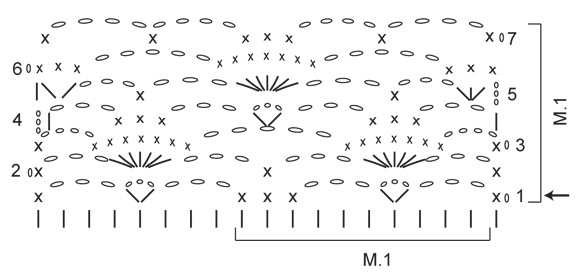
|
|||||||||||||
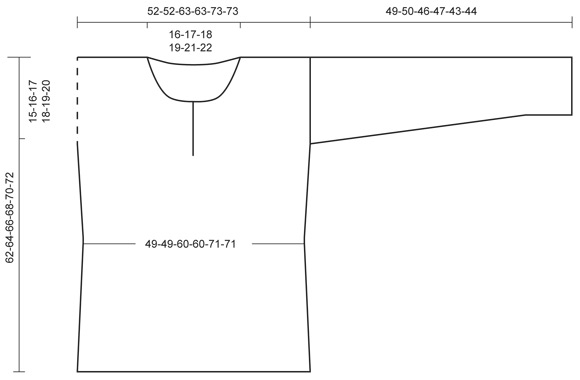
|
|||||||||||||
|
Have you made this or any other of our designs? Tag your pictures in social media with #dropsdesign so we can see them! Do you need help with this pattern?You'll find tutorial videos, a Comments/Questions area and more by visiting the pattern on garnstudio.com. © 1982-2024 DROPS Design A/S. We reserve all rights. This document, including all its sub-sections, has copyrights. Read more about what you can do with our patterns at the bottom of each pattern on our site. |
|||||||||||||

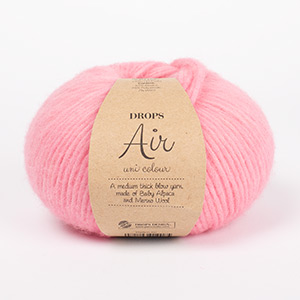





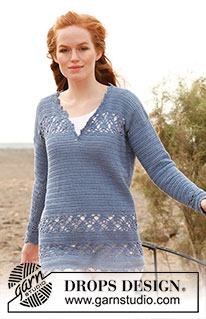
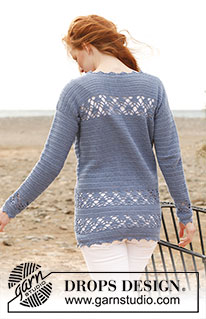

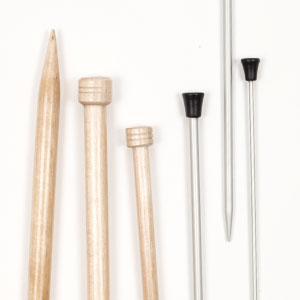
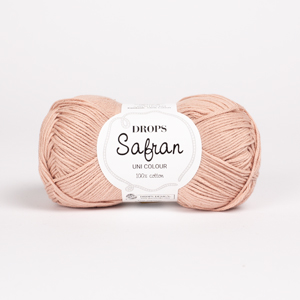






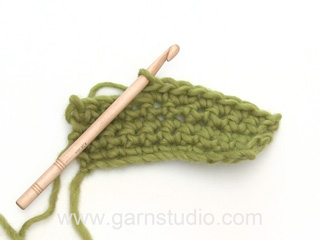
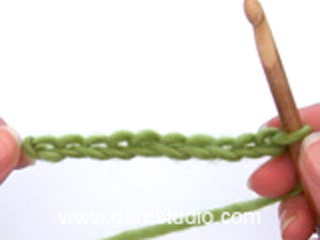
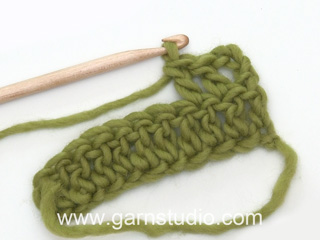
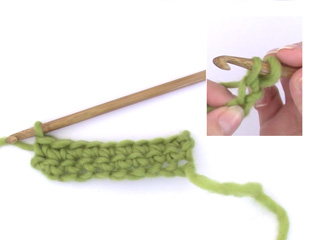
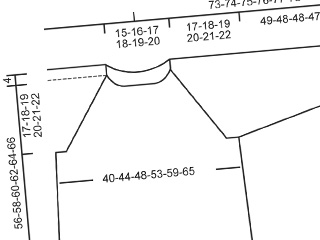
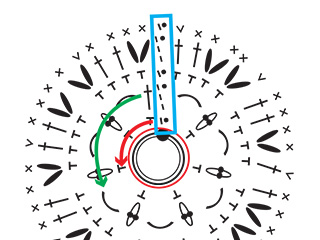
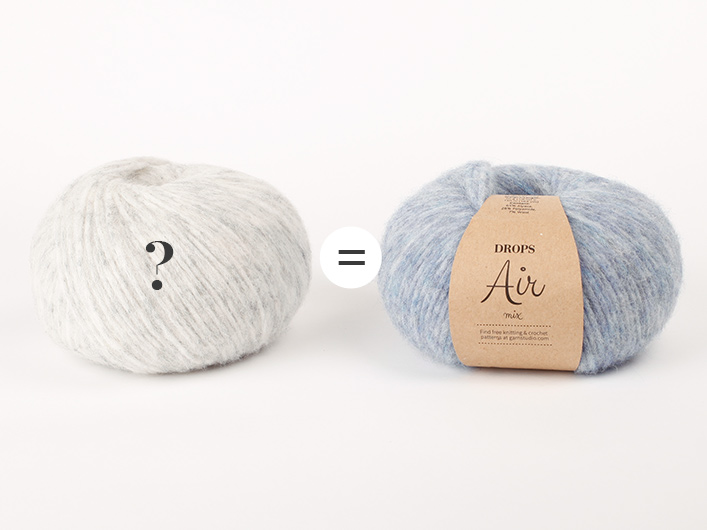

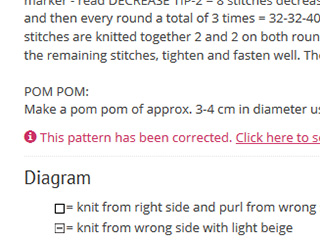
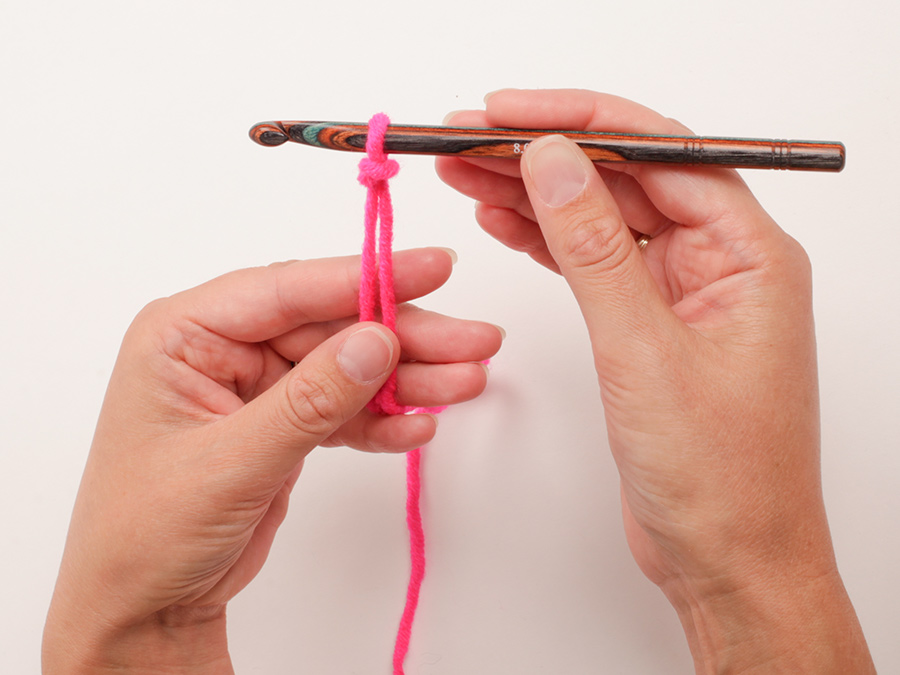
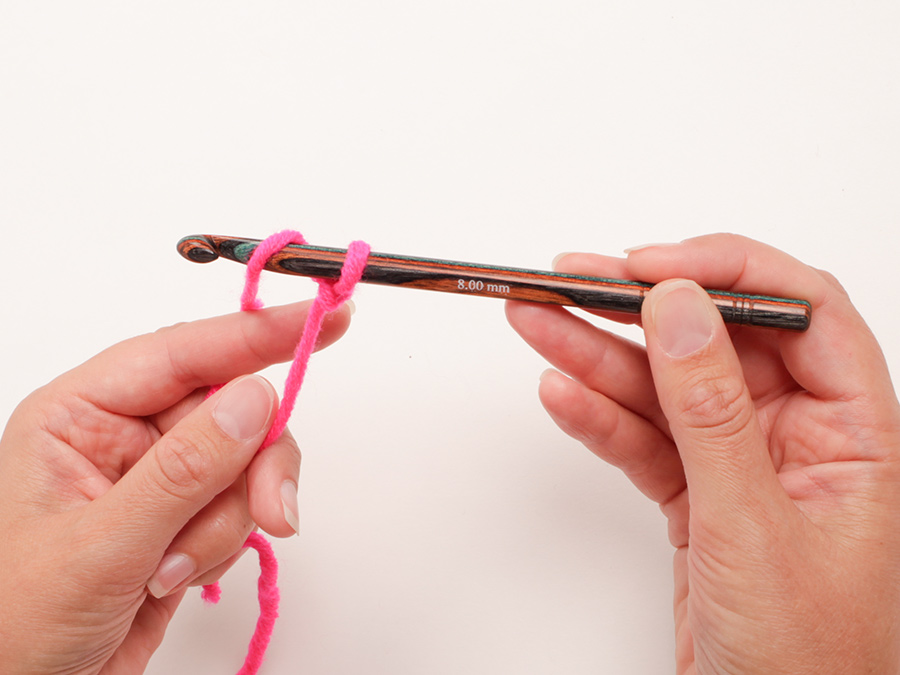
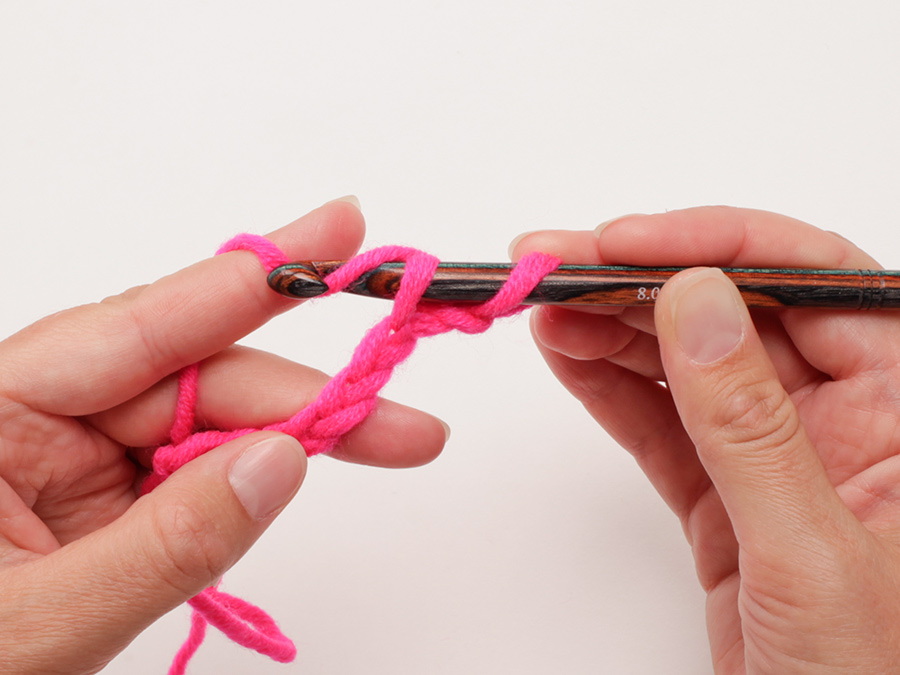
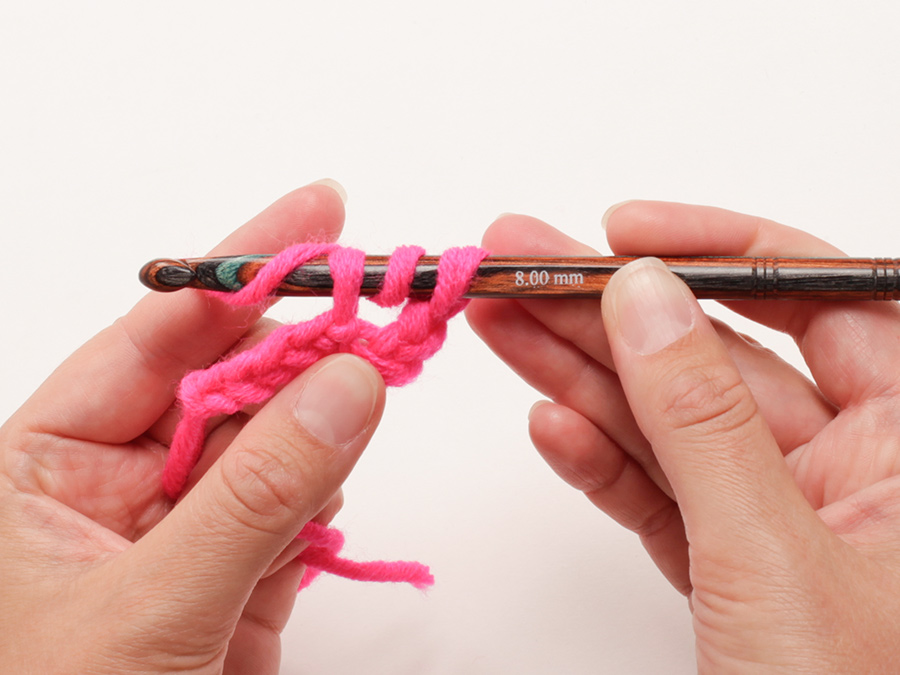

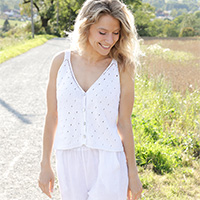
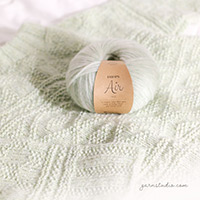
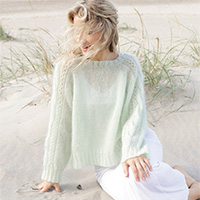

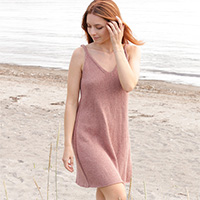
Comments / Questions (35)
Ich würde die Tunika gerne mit dem Garn "cotton light" häkeln. Wie müsste ich da umrechnen um zu wissen wieviel Garn ich zb für xl / xxl bräuchte?
04.09.2021 - 23:17DROPS Design answered:
Liebe Arhi, dieses Modell wird mit Safran, ein Garn der Garngruppe A, Cotton Light gehört zur Garngruppe B und wird hier keine Alternative sein. Hier finden Sie alle unsere Pullover, die mit einem Garn der Garngruppe B (wie Cotton Light) gehäkelt wurde, so können Sie ruhig unseren Garnumrechner benutzen. Viel Spaß beim häkeln!
06.09.2021 - 07:32Hei! Mulla meni L kokoiseen paitaan yli 500 g, vaikka ohjeessa sanottiin että 500 g riittäisi.
13.04.2021 - 14:56Hej! Jag förstår inte den här biten gällande bakstycket: "Sedan virkas det 1 st-varv över de yttersta 35-34-43-42-51-50 m i varje sida (dvs det virkas inte över de mittersta 29-31-33-35-37-39 m (= hals), sedan maskas det av 1 m på nästa varv mot halsen = 34-33-42-41-50-49 m kvar på axeln. Klipp av tråden och fäst den, nu mäter arb ca 62-64-66-68-70-72 cm". Hur virkar jag på två sidor utan att virka i mitten? Och vad menar ni med "nästa varv mot halsen"?
03.11.2020 - 11:23DROPS Design answered:
Hej Disa. Du får virka färdigt ena sidan först och sedan göra färdigt den andra. När vi skriver nästa varv mot halsen så menar vi bara att du maskar av mot den sidan som är in mot halsen. Mvh DROPS Design
05.11.2020 - 09:01Går denne fint å hekle med Safran? Fsrgetips?
26.04.2020 - 09:37DROPS Design answered:
Hei Denne er heklet i DROPS Safran nr 06, jeansblå. Mvh DROPS Design
27.04.2020 - 10:08Je ne comprends pas pourquoi la photo présente un pull col en V et le dessin explicatif :un col rond fendu.
25.02.2020 - 15:10DROPS Design answered:
Bonjour Sylvaine, parce que lorsque l'on divise le devant pour l'encolure, on ne va pas de suite diminuer pour l'encolure, on crochète d'abord quelques rangs "droit" et alors seulement, on diminuera pour l'encolure. L'effet obtenu sera celui sur la photo. Bon crochet!
25.02.2020 - 15:33Na het lezen van de opmerkingen kom ik er toch niet helemaal uit. Ben nu bij de hals en als ik 9 st. overhou en daarna het werk keer en verder haak volgens patroon, hou ik een hoek over in de V hals. komt dat bij de afwerking van de hals goed? wil graag zoals op de foto een V hals maken in de trui. Hoor graag of dit klopt.
09.10.2017 - 18:05DROPS Design answered:
Hallo Elly, Voor de V-hals haak je tot de middelste steek van de vorige toer en dan keer je. Ik weet niet welke maat je haakt, maar bijvoorbeeld voor maat S heb je op dat moment 99 steken op de toer en je haakt 49 steken. Als je straks voor de andere helft ook 49 steken haakt kom je op 98 steken uit. Geen hoek dus, maar 1 steek midden waar niet in gehaakt wordt.
11.10.2017 - 22:03Bonjour, je suis partie sur une taille M qui est trop large mais bien dans la longueur. est-il possible que je travail trop large (mon échantillon était pourtant bon) et dans ce cas est-il possible de travailler avec un crochet n°3? et pas assez de laine pourtant prévu pour une taille L. dans l'attente de votre réponse. Cordialement PS: merci pour vos super modèles
27.01.2016 - 10:07DROPS Design answered:
Bonjour Mme Godeau, pensez à bien crocheter avec la même tension que celle de votre échantillon, il est facile de relâcher sa tension en cours d'ouvrage - ajustez la taille de votre crochet si nécessaire pour bien avoir le même échantillon, et vérifiez bien votre taille à partir des mesures du schéma. Bon crochet!
27.01.2016 - 10:41I'm working on the front-left neckline. My piece (is a Med.) DECREASE's: Do they occur on the RS only or is it every row? *dec 2 dc on WS, dec 2 dc on RS; at the neck. = 2 rows leaves me with 37 dc. *dec 1 dc on each of next 4 rows at the neckline. = 33 dc repeat 33 dc until piece measures 64 cm.
12.01.2016 - 23:46DROPS Design answered:
Dear Mrss Keener, that's correct, you dec every row towards neckline, ie both from WS and from RS. Happy crocheting!
13.01.2016 - 10:08I'm a little confused by the size chart for this pattern. As it seems that the bust size is listed as the same for both large and xl. the 38" small medium would definitely be too small, but 47" seems huge for my 41 inch bust. I am about a size fourteen petite in regular clothing, what size would you recommend?
19.10.2014 - 21:21DROPS Design answered:
Dear Caitlan, this tunic is worked a bit loose, if you want something fitter, you will have to adjust to your size. Your DROPS Store may help you if required. Happy crocheting!
20.10.2014 - 10:31Ik snap de beschrijving van de hals niet helemaal. Na het telpatroon ( dus na de vaste toer) staat er: haak tot er 8 st over zijn op de toer, hoe bedoelen jullie dat?
25.05.2014 - 21:18DROPS Design answered:
Hoi Thea. Je hebt 49 v op de toer en haakt dan de volgende toer van de goede kant tot er nog 8 st over zijn (= dus je hebt 41 v gehaakt). Keer het werk.
27.05.2014 - 12:06